October 14, 2004
Three Paintings on Paper
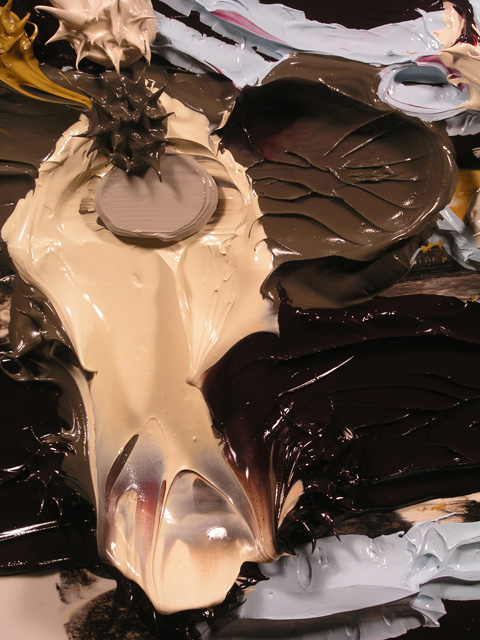
Scintillating ruminations follow...
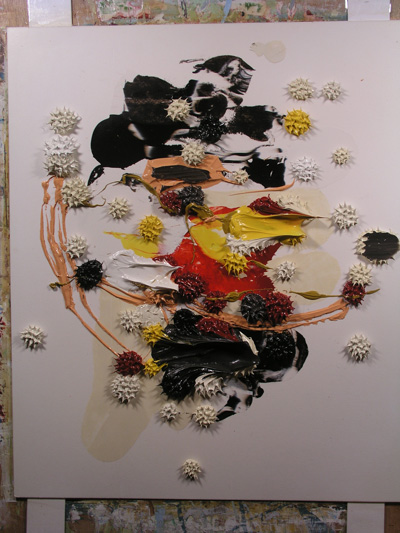
I've always thought that the entirety of this body of work (now passing 220 in number, not including the works on paper) is a chain where each painting is an argument (I'm not sure that this is the correct term) one leading to another. The paintings here follow from the last work on paper shown in this post. And they are a development of strategies explored in the tail end of the body of work sent to Z?rich last August.
What I am pointing to here is the incorporation of marbleized passages and the open architecture that has to happen if you want to see the first marbled moves.
I tend to swing from light to heavy, and back... this one being one of the lighter ones.
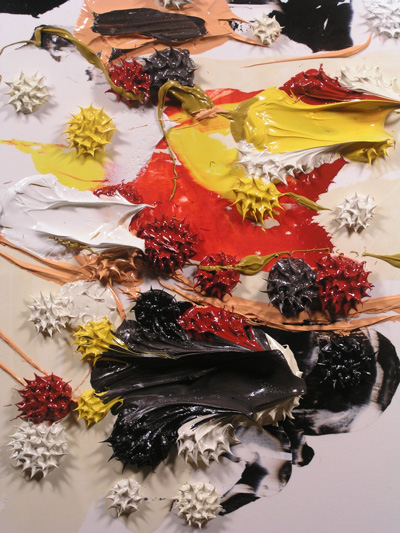
I think we see with a synthesis of views panoramic, close up and a memory of what had been seen before. Showing the paintings with photography, I think several images and this chatter are neccessary here to translate the experience.
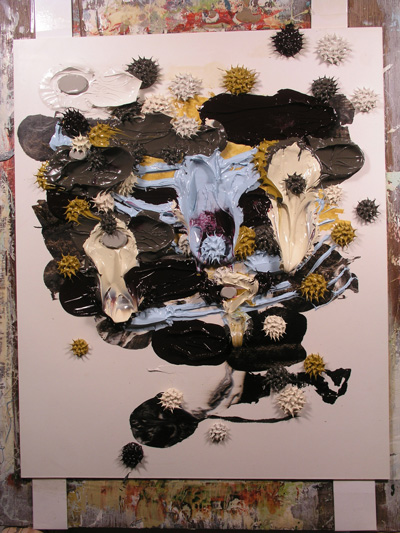
And as I go towards the abandonment of density, here I try to keep enough air within and especially surrounding the image/mass.
Each pass into the painting results either in poetry or noise. Often the poetry occurs soon, too early in fact. It slows me down, partly an effort to learn from it but also an effort to summon the wherewithal to destroy it with the next action (whew, what an art-theory-loaded word, "action"). I can hear the voices of friends fromt he past: "Stop right there, don't ruin it!" And as tempting as it is to stop, I have other objectives in mind, so I soldier on. (The friends roll their eyes.) The isolated minimalist frozen gesture was done by David Reed and others in late 80's and early 90's NYC. I prefer not to reprise that moment today.
Often, crossing the threshold of spoiling something good keeps me frozen in the studio, contemplating the painting for far too long. And the paint is drying all the while. And just as often, the subsequent great "moves" (I'm not entriely comfortable with that term) need a besotted bed of paint-experience to pull victory from the jaws of defeat (verbage here is a little over the top... but it works because a bad painting is such a bummer that when you can turn it around, it's "YES! YES! YES!"). You have to be willing to paint past where you thought you were going to find a new place entirely. (And conversely, you need a place to go to as you start off.)
It's about having the nerve to go too far and having the sense of knowing when to stop. Hey, Rauxa and Seny!

(A note on the colors: It's hard to discern the color of a deep earthy red that is flattened out here in these jpegs.)
Carnal.
Flesh.
Mortality.
The pain of existence.
Vanititas.
Watery Greco eyes turned up to heaven. Sweaty trembling hands clasp in ecstatic anguished agony.
Martin Sheen writhing, a purgatory of a night in a Vietnamese hotel room.
... uh...
Coltrane in Tokyo. (I wish.)
(Just go with it. Winky Emoticon= ;-I )
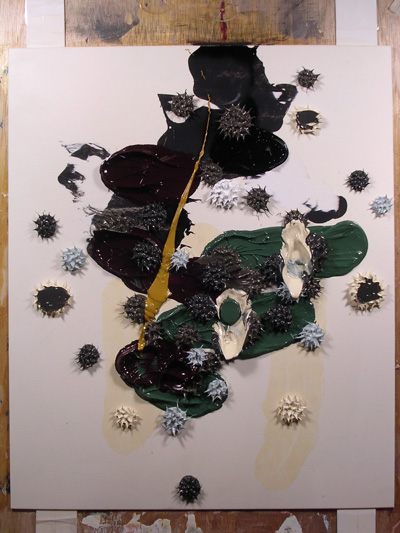
And now for something different, clear the pallette.
Take a shower.
Shake it off, man.
Restring yourself.
Use the chops to sing a clear note.
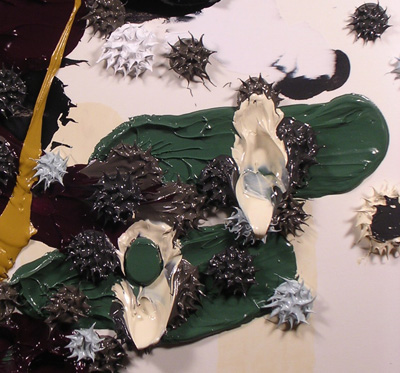
I remember the movie They Mystery of Picasso". He would paint, "thinking aloud". Meandering. (However breathless poplular descriptions evoke the charging bull and blazing eyes.) A mess, a disaster in the process... he would then take up a new glass (canvas) and apply the things he learned from the previous car wreck of a painting.
Both the car wreck and the recovery are important, one wouldn't be possible without the other.
Posted by Dennis at October 14, 2004 7:54 AM
Leave a comment